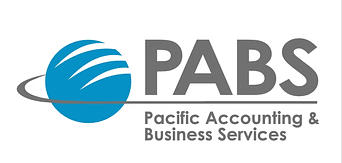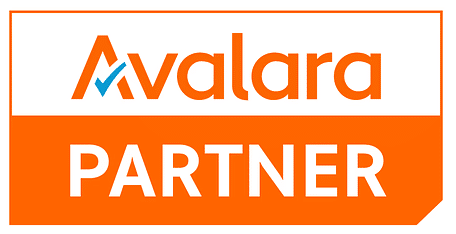Profit First accounting Method
There is always a lot to think about when you’re running a successful company, whether you’re a startup or have been in the industry for years. When you’re running your business, managing cashflow is always a concern. Whether it’s lack of knowledge or not applying the tax-saving strategies correctly, you could be leaving money on the table. That is where the profit first method comes into play. We will break it down further for you and help you understand how it can positively impact your business for the long haul.
What Is The Profit First Accounting Method?
This idea first originated in 2014, with a popular book written by Mike Michalowicz, titled “Profit First: Transform Your Business from a Cash-Eating Monster to a Money-Making Machine”. The premise is simple – prioritize profit first and allocate your funds accordingly. In essence, it’s a cash flow management system that focuses on maximizing profits by allocating money towards the most important aspects of your business. The traditional accounting method involves tracking revenue and expenses, with the goal of increasing revenue and reducing costs to maximize profit.
It can be thought of as a “profit last” approach, where profit is seen as the leftover amount after all other expenses have been paid. However, the profit first method flips this mentality on its head by prioritizing profit from the beginning.
Understanding How The Profit First Method Works
The overall goal of the “profit first” accounting method is relatively simple. This is taking profits from the cash deposits before you pay the bills. The five foundational accounts used with this method are explained in detail below,
- Income: This account is where all the business income flows into.
- Profit: A percentage of the income deposited into this account, usually around 5-10%, is set aside for profit.
- Owner’s Compensation: This account holds the owner’s salary and draws.
- Taxes: A percentage of income (around 15-20%) gets transferred to this account to cover tax payments.
- Operating Expenses: After allocating funds towards the other accounts, whatever money is left goes into this account to cover day-to-day expenses.
By prioritizing profit first and setting aside a specific amount for it, businesses can ensure that they are making a profit from their operations rather than just breaking even. This method encourages business owners to be more mindful of their spending and make necessary adjustments to increase profits.
Benefits Of Using The Profit First Accounting Method
Anytime you hear the word “profit first”, you’ll immediately start to think about the advantages. However, there are many more benefits than just prioritizing profits. Here are some additional advantages of utilizing the profit first method for your business.
More Control Over Cashflow
Wouldn’t it be amazing if you had complete control over the way funds were allocated in your business? The profit first method gives you that power. By separating funds into different accounts, it becomes easier to track where money is being spent and make necessary adjustments.
Increased Profitability
Have you ever met any small company or business that doesn’t want their company to be profitable? Probably not. A profit first accounting method allows you to prioritize profit from the beginning, increasing your chances of running a successful, profitable business.
Encourages Better Spending Habits
With this method, businesses are forced to be more mindful of their spending. By allocating a specific amount for profit, owners are more likely to make necessary adjustments to reduce expenses and increase profit margins.
Provides Clarity On Financial Health
By separating funds into different accounts, business owners can get a clear picture of their financial health. This method helps identify areas where the business may be overspending and allows for better financial decision making.
Drawbacks To Using Profit First
As a way to increase profits, many businesses have turned to this strategy. However, it’s important to understand there isn’t a “one size fits all” for every company. There are some potential downsides you want to consider before choosing this method.
Difficult To Put Into Action
Implementing the profit first method can be challenging, especially for businesses accustomed to traditional accounting practices. Transitioning requires a significant shift in mindset and a willingness to restructure financial operations. Business owners need to be disciplined in setting up and maintaining multiple bank accounts, each dedicated to different expenses and goals.
Time Consuming
Adopting the profit first method can be time-consuming, especially during the initial setup phase. Business owners must establish new routines to monitor and manage multiple accounts, which can be overwhelming. Ensuring timely allocation of funds and monitoring each account requires careful attention and regular check-ins to prevent any potential mismanagement.
Can Be Challenging If You Have Debt
The profit first method focuses on prioritizing profits, which can make it challenging for businesses with existing debt. In some cases, paying off the debt may take priority over allocating funds towards profit, making it difficult to implement this strategy.
FAQS: Is The Profit First Right For My Business?
Profit First assists business owners in effectively allocating resources to maximize profits and foster sustainable growth. It’s an ideal accounting method for those looking to take control of their finances and prioritize profitability.
What are The Five Profit First Accounts?
- Income
- Profit
- Owner’s Compensation
- Taxes
- Operating Expenses
How Do I Set the Right Percentages for Each Account?
Determining the right percentages for each account depends on your business’s specific financial situation and goals. Analyzing past financial performance and consulting with a financial advisor can help you establish the most effective allocation tailored to your needs.
Is the Profit First Method Suitable for Seasonal Businesses?
Yes, but seasonal businesses need to take special precautions. They should set aside a higher percentage of income during peak seasons to cover operating expenses and desired profits during slower periods.
Can Profit First Be Adjusted Over Time?
As your business grows and financial goals evolve, it’s important to reassess and adjust your account percentages accordingly. This flexibility ensures that the method continues to serve your business effectively over time.
Flexkeeper Can Help You Improve Your Financial Health
At Flexkeeper, we understand the unique challenges businesses face when it comes to managing finances. That’s why we offer a variety of financial services, including bookkeeping, tax planning, and financial analysis. Our team of experienced professionals can help you implement the profit first method and tailor it to your business’s needs. Contact us today to learn more about how we can improve your financial health and increase profitability using the profit first accounting method.











